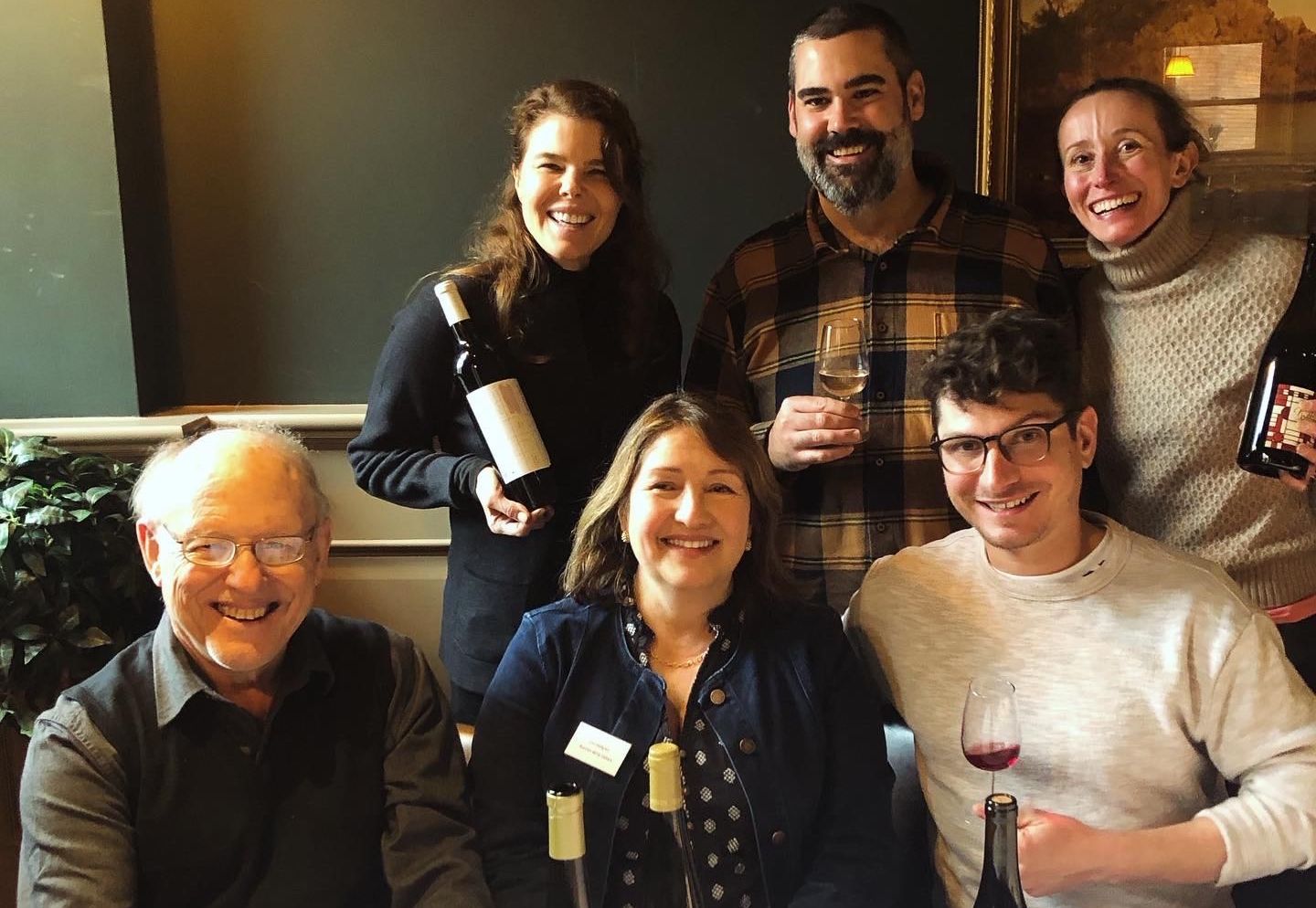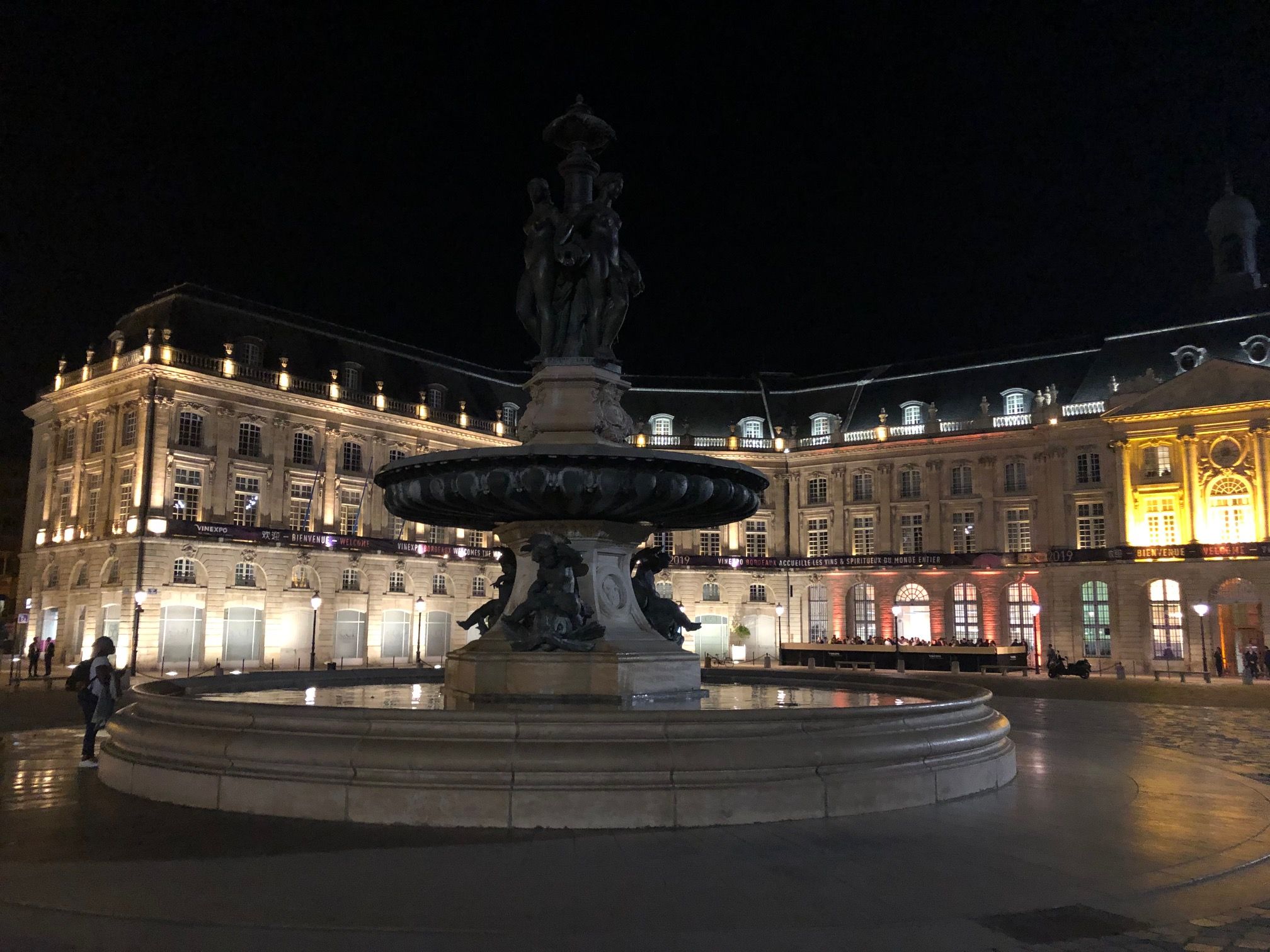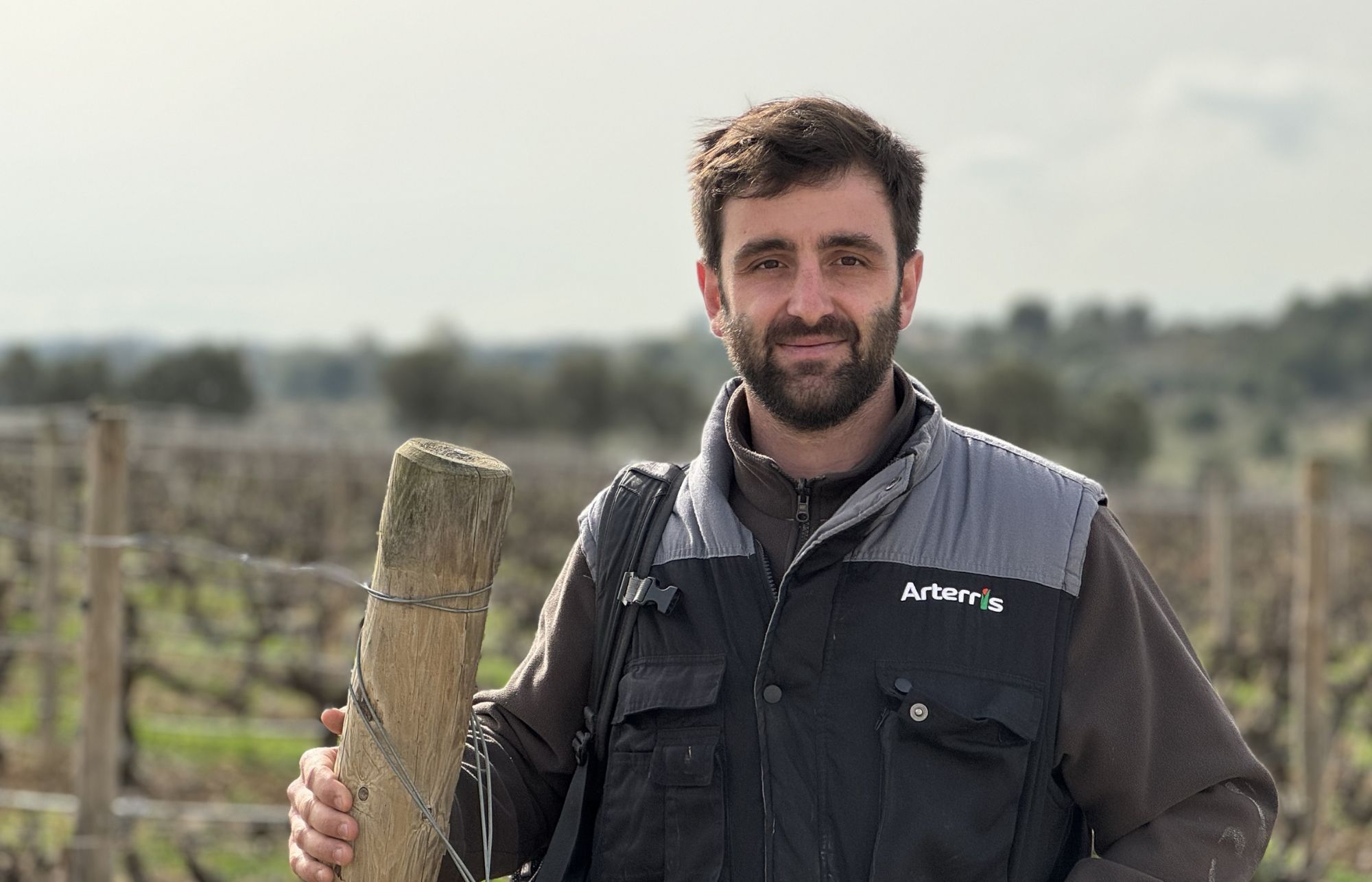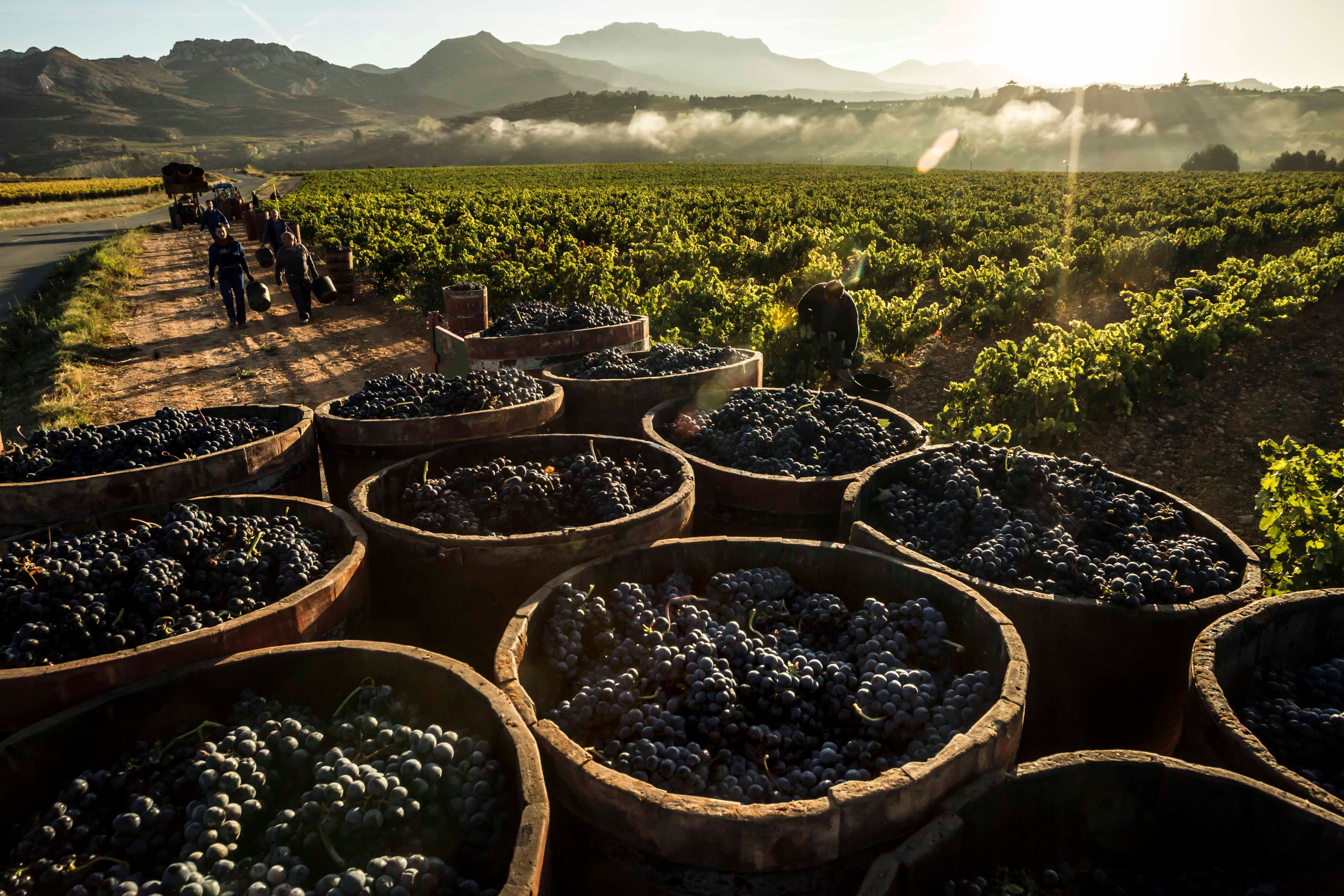“If you wanted to show someone the difference between a multi-site blended Rioja and a single vineyard wine this would be a good place to start – the difference between this and the El Pacto is instantly recognizable in quality,” writes Dean.
The Vintae team has done it again with Viñedos El Pacto, a new wine label launched this week that is attempting to return wine lovers to an old style of Rioja – one that existed before the boom of the Industrial Revolution and has its roots in small, singular, and terroir-driven expressions of the region. The aim is to produce the Rioja “our grandfathers used to make”.
El Pacto is a red blend has existed since 2009 as a wine in Vintae’s other Rioja project – Hacienda López de Haro – but now it is joined by an El Pacto blanco and two single vineyard wines, Riojanda and Valdechuecas, both old vine field blends, the latter made up largely of Garnacha in an homage to the Rioja that existed before Tempranillo took over the vineyards, or the “genetic erosion” as the Vintae team calls it – taking one clone of one grape and replicating it to maximise yield and ease of farming.
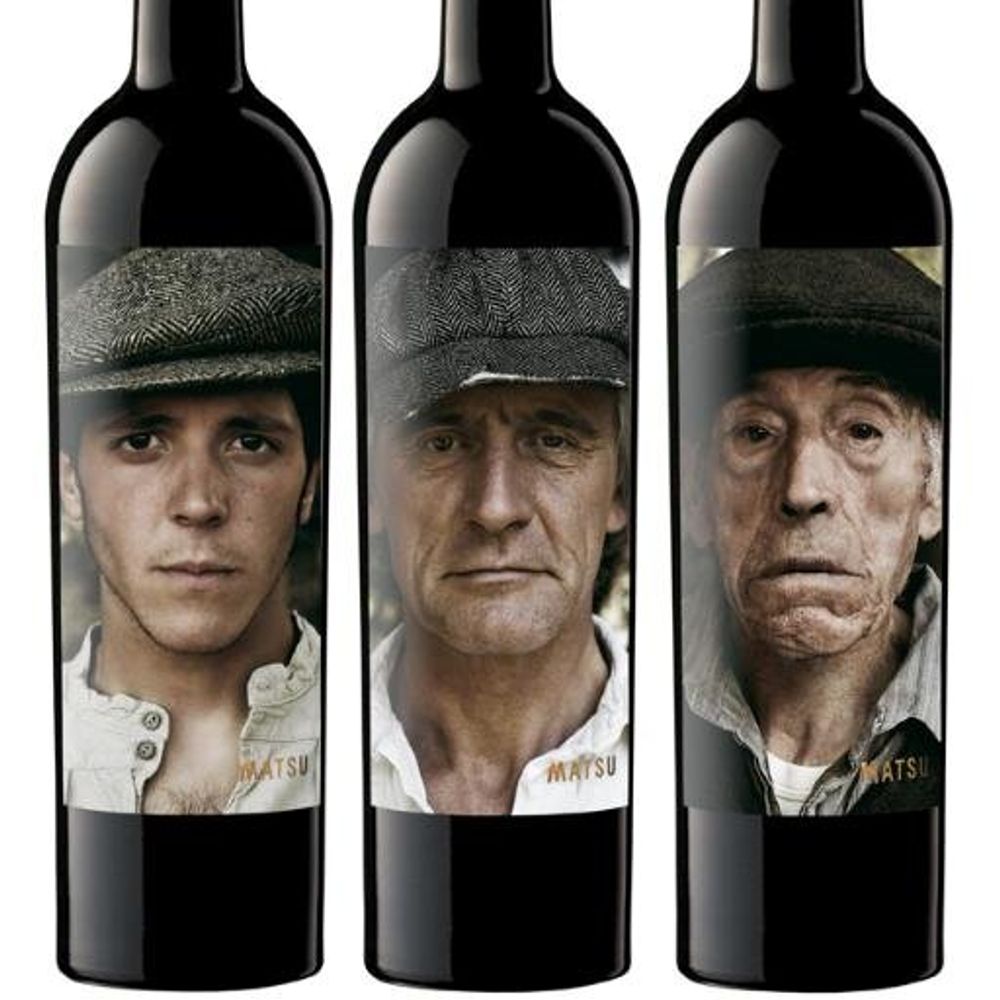
Vintae’s Matsu wines made in Toro is another example of a smart sub-brand
Vintae, for those who don’t know, came to life in 1999 with José Miguel Arambarri, a businessman and wine lover from Rioja who was joined by his sons, Richi and José Miguel, turning the business into a company that now makes wine in 14 Spanish denominations, always focused on authentic, home-grown projects such as Hacienda López de Haro in Rioja, Matsu in Toro, Bardos in Ribera del Duero and Aroa in Navarra. All of the Vintae projects share strong links with the viticultural traditions of a wine region, a quest to preserve the past, and a central philosophy of sympathetic and sustainable agriculture.
All of Vintae’s wine projects are also smart and contemporary with each embodying a vision that is clearly expressed through clear, bold designs that delivers a brand consistency. The close-up photographs of the farmers of Toro on the four Matsu bottles is a classic example of this.
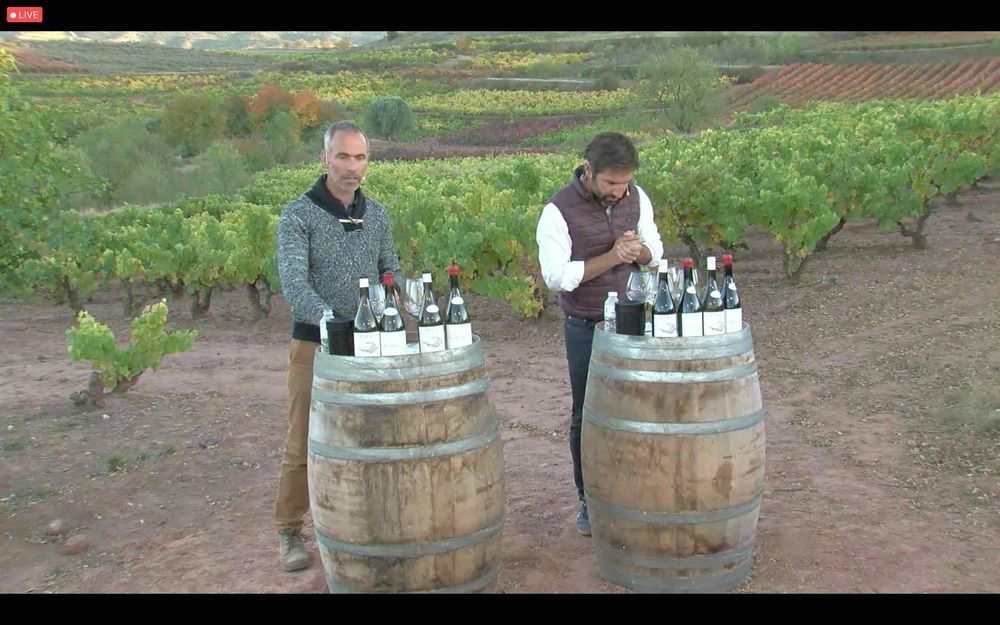
Raúl Acha and Richi Arambarri presenting live from the vineyard in the 2nd English launch of the day.
And, in keeping with Vintae’s other online media launches, the launch of Viñedos El Pacto was a feat to behold, a lesson in the use of state-of-the-art technology, mixing two presenters, multi-cameras, broadcast quality images, drones, interaction, all coming to you live from a remote Spanish vineyard. As Raúl Acha (technical director and chief winemaker) and Richi Arambarri (CEO) looked upwards at us and raised a glass skywards to the ascending drone – exactly on the stroke of the allotted hour – you couldn’t help thinking that other wine companies would do wise to try and watch how these guys do it.
Viñedos El Pacto and its four wines
All of Vintae’s wines are aimed at being enjoyable, drinkable wines which are fresh, elegant, terroir-driven and contemporary – by returning to the old way of doing things. The four new wines from Viñedos El Pacto are no different, with the aim being to do this through small-scale viticulture using ancient vineyards. This ‘pact’, then, is a contract that the Vintae team has made with the old way of doing things, a pact between them, old vines, terroir and past winemaking styles.
For Acha and Arambarri it is also a personal project, seeing them return to the village wines of Sonsierra and Alto Najerilla, where their families are from. Arambarri explains that in these villages a modest, rural, artisanal winemaking tradition has carried on for a century side-by-side with the mass production of Tempranillo that grew out of the Industrial Revolution – the wines being made mainly for local consumption. These sites have poor soil, are on top of hills and have an abundance of varieties and clones in one plot – in other words, the type of site that can produce individual wines of character.
“For many decades, the vineyards were in very poor areas that were ideal for vines and were worked in a very non-interventionist way, without pursuing high yields,” he says, adding that preserving biodiversity, sustainability and non-interventionist winemaking were simply the old way of doing things.
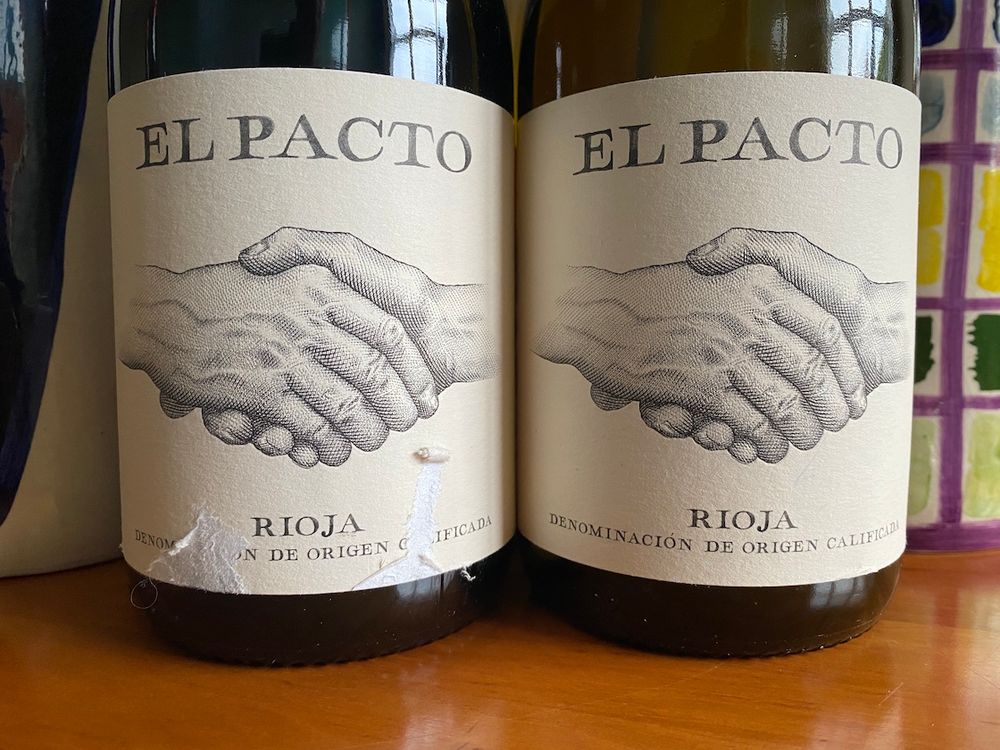
El Pacto de la Sonsierra 2019, Viñedos El Pacto (€12)
This is the wine that inspired the whole project and has been around since 2009, being a one-off in the Hacienda López de Haro portfolio. It always did seem a bit out of place and now, with the addition of a white village wine and two single vineyard cuvées under the Viñedos El Pacto umbrella and with a smart re-brand, it feels much more ‘at home’.
The wine is mostly Tempranillo (90%) from four South-facing vineyards planted in the planted in the 1950s and 1960s in Baos de Ebro, Villabuena de Álava, Navaridas, and San Vicente de la Sonsierra. The remaining 10% of the blend is made up of small amounts of Graciano, Mazuelo, and white varieties from 27 different high altitude plots. Soils here are calcareous clay with a rocky component. The must macerates for 10 days before fermenting in 20,000 kg tanks with the help of native yeasts. It is crianza by any other name having been aged for 14 months in French, European and American 225-litre oak barrels, of which 60% are second use. Just less than 100,000 bottles are being produced.
To taste: the wine is bright, medium ruby-violet; bouquet offers intense notes of fresh fruits of the forest, spices, liquorice, wild herbs, white tobacco; the palate is fresh, rounded with a fine-grained texture, nice grip, flavours tend towards red fruit – cherry, raspberry, a touch of ripe fig. This is a modern style, dry, medium to full bodied wine, medium to high acidity, creamy with a lean mineral edge with good precision, balance and energy.

The launch mixed live presentation with maps and details about the wines
El Pacto del Alto Najerilla 2020, Viñedos El Pacto (€16)
This is the first vintage of an El Pacto white, a Viura-dominant field blend from two vineyards planted 40 years ago in Cárdenas and Nájera, an area of ferrous clay (that gives higher acidity than calcareous clay) with conglomerate rock as the main soil type. The must is macerated with the skins, fermented for 15 days at a controlled temperature with its own yeasts, and then transferred to wooden foudres and barrels, where it remains in contact with its lees for eight months. Part of the wine’s rationale is to highlight the important history Rioja had for its whites which has somehow got lost with the boom in the whites of Rueda, Galicia and Ribera del Duero. Acha explains that this wine could have been released as a Viñedo Singular, as it qualifies under the criteria but they didn’t want to over-complicate the release. 9,000 bottles makes up the initial release.
To taste: The wine is light straw coloured; the nose is complex and has a bouquet true to its field blend/ whole bunch/ lees-aged vinification. Intense and woody, this is a dry, light to medium-bodied wine with a leesy depth on the mid-palate, with lime peel and grapefruit pith.

Valdechuecas 2019, Viñedo Singular, Viñedos El Pacto (€45)
The real stars of Viñedos El Pacto are two single vineyard wines that have been made possible by the new Viñedo Singulares category that was introduced by the Ministry of Agriculture, Fisheries and Food just a few years ago.
The first is a red that comes from a North-facing vineyard with less than one hectare in Cárdenas, planted between 1912 and 1918 at an altitude of 595-620m. Part of the vineyard was planted by Raúl Acha’s grandfather and the land was owned by his grandmother, Anastasia Terreros. In keeping with a lot of Rioja vineyards at that time the dominant grap was Garnacha with the plot comprising a range of clones and varietals — in this case Tempranillo, Viura, Malvasía and some Graciano and Mazuelo vines, the soil is ferrous clay with conglomerate rock and yields at just 1000kg/ hectare.
Valdechuecas is made with 10% whole bunch, fermentation in concrete, where malolactic conversion also occurs. Afterwards, it ages for about twelve months in a 2400-litre foudre.
Light to medium ruby-purple; the wine has complex nose: strawberries, sechuan pepper, Peking duck. The palate is medium to full-bodied, structured with pronounced acidity lending real tension to the wine which is a real achievement given that it has a 15% abv. There is intensity in the fruit flavours – wild strawberries, cranberries, blue plum skin – with balsamic notes also. The wine is very different to new wave Mediterranean Garnacha which tends to be more rounded, this has less heat, is more fresh and angular, with tingly acidity and a mineral core.
Riojanda, Viñedo Singular, 2019, Viñedos El Pacto (€45)
Riojanda comes from two plots of the same name in Navaridas, planted in 1920, that together total just one fifth of a hectare. The vineyard, on calcareous clay soils and facing slightly east at an altitude of 535m, is densely planted with Tempranillo but also contains Graciano and Mazuelo vines, some unknown varieties, the occasional white varietal, and a multitude of clones, the plot yields just 1000kg/ha. The fruit is harvested by hand, destemmed and fermented in vats with its own yeasts. Malolactic conversion takes places in French oak and is aged in 500-litre French barrels for up to 18 months. Only 700 bottles of 75 cl. have been produced and 30 magnums.
The wine is light ruby-purple to look at; Ripe, intense with a pretty bouquet of black cherries, wild blackberry, smoke, liquorice root; The palate is fresh, elegant and finely detailed, clean and pure with ripe powdery tannins, just ripe blackberries, a lick of cream and a squeeze of blood orange – great balance between ripe fruit and acidity. There’s also a lovely stony, mineral texture and energy to the wine, you can feel a sense of place. If you wanted to show someone the difference between a multi-site blended Rioja and a single vineyard wine this would be a good place to start – the difference between this and the El Pacto is instantly recognizable in quality.
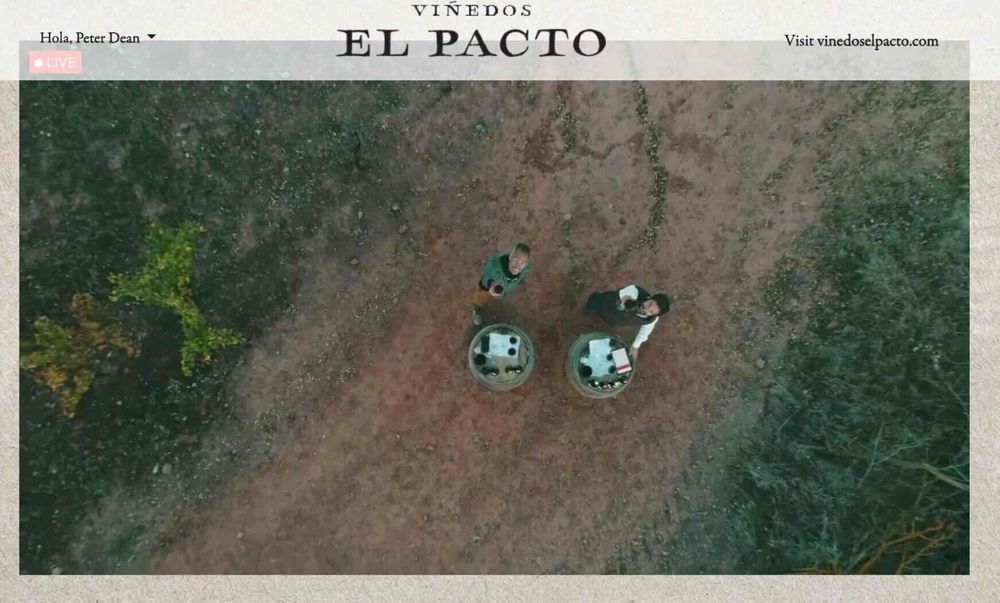
The closing shot of a very tightly-made live presentation

